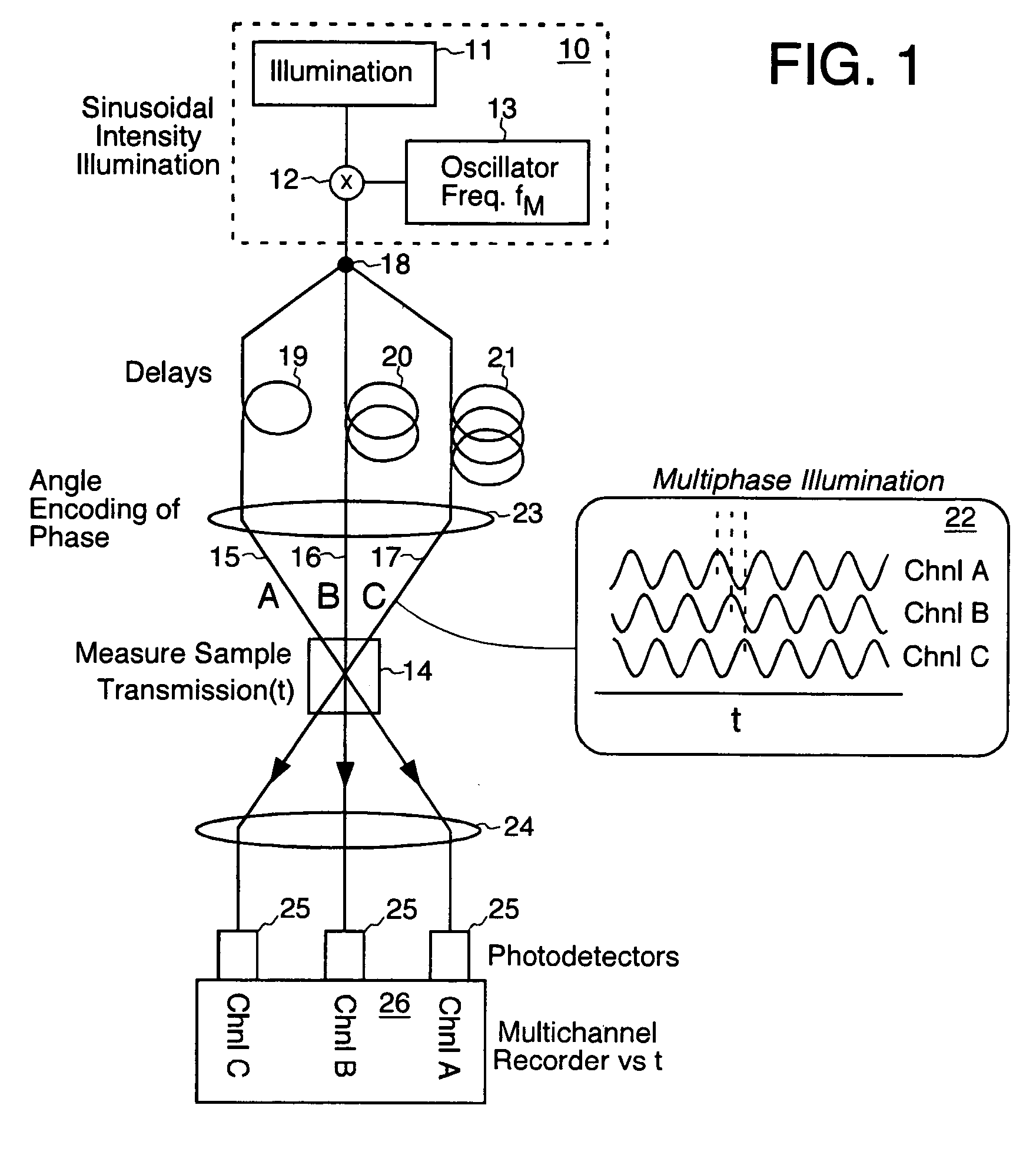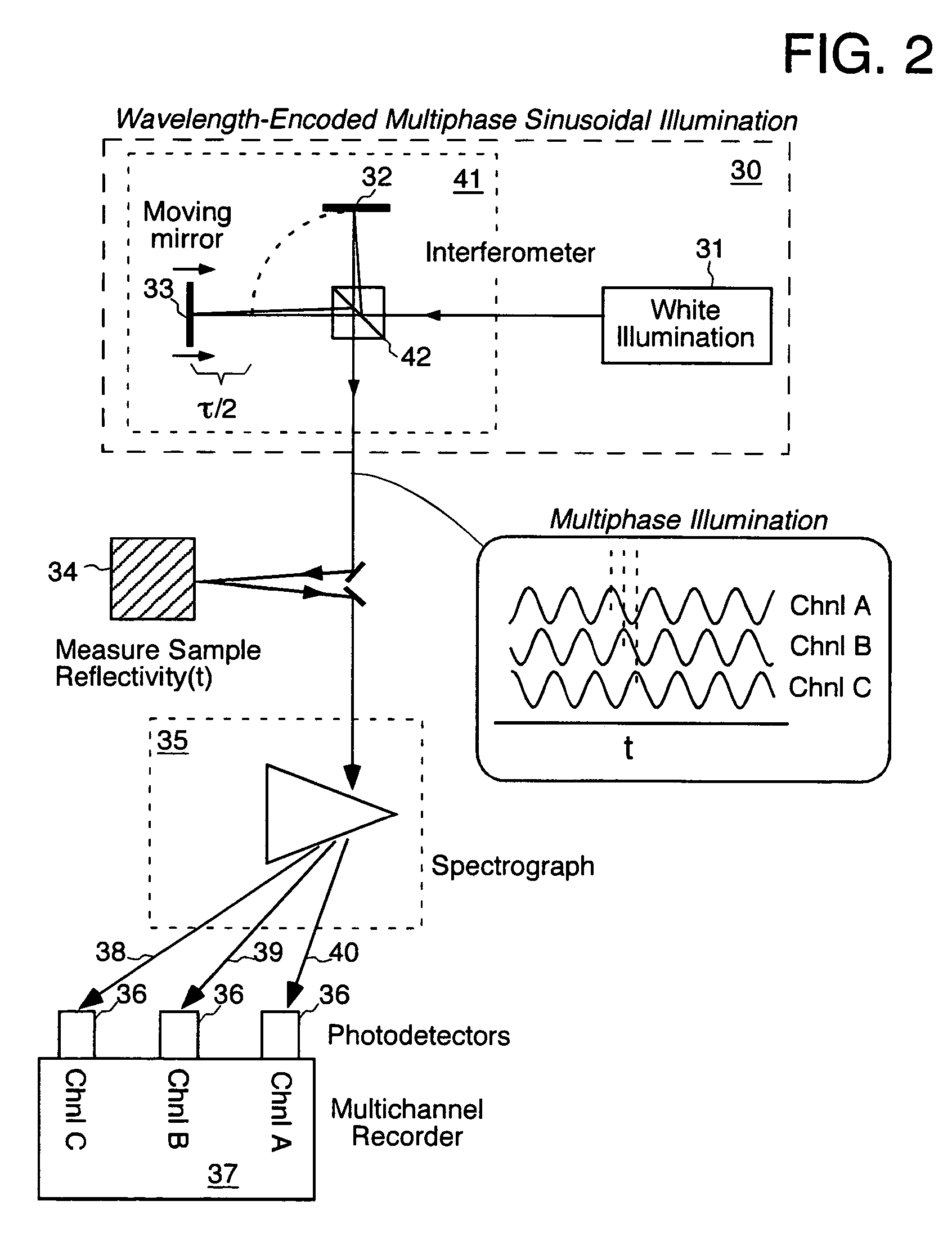Heterodyning time resolution boosting method and system
- Summary
- Abstract
- Description
- Claims
- Application Information
AI Technical Summary
Benefits of technology
Problems solved by technology
Method used
Image
Examples
Embodiment Construction
Encoding Phase-Differentiated Illumination Channels by Angle
[0067] Turning now to the drawings, FIG. 1 shows an embodiment of the invention that uses multiple phase-differentiated illumination channels, e.g. 15, 16, and 17, encoded by angle to measure a sample 14 transmission (or reflectivity) versus time. A light source 10 which has a sinusoidal variation of intensity versus time at frequency fM illuminates the sample. This could be created for example from a constant illumination source 11 by modulating light at an intensity modulator 12 controlled by a local oscillator signal 13 having frequency fM. This fM is referred to as a modulating or heterodyning frequency. The intensity modulator 12 could be implemented by an acousto-optical device commonly used in the laser sciences, which uses sound waves traveling in a crystal to diffract a beam of light away from a non-diffracted output into a diffracted output. Applying an oscillating voltage at frequency fM to the acousto-optic eleme
PUM
 Login to view more
Login to view more Abstract
Description
Claims
Application Information
 Login to view more
Login to view more - R&D Engineer
- R&D Manager
- IP Professional
- Industry Leading Data Capabilities
- Powerful AI technology
- Patent DNA Extraction
Browse by: Latest US Patents, China's latest patents, Technical Efficacy Thesaurus, Application Domain, Technology Topic.
© 2024 PatSnap. All rights reserved.Legal|Privacy policy|Modern Slavery Act Transparency Statement|Sitemap



